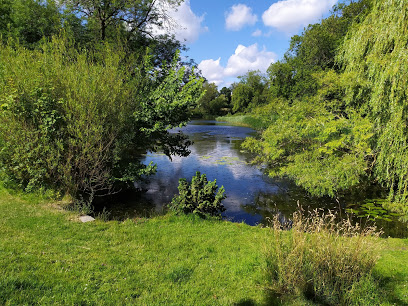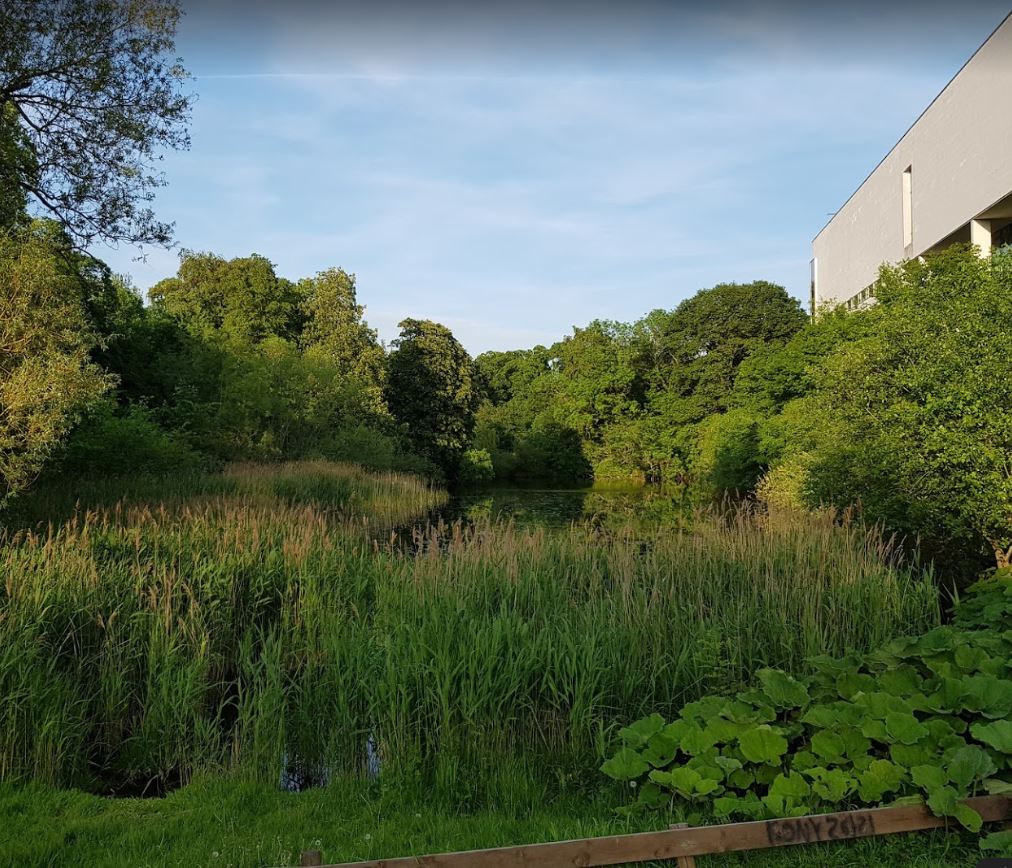Trench town where Østre Anlæg is today uin in the late 18th century
Østre Anlæg is located on the land where the previous circular fortification lasted in Copenhagen until the second half of the nineteenth century. At the initiative of Ferdinand Mildall, it was decided to reserve a large portion of the land for new public parks. Østre Anlæg was created when landscape engineer Ole Høeg Hansen converted a section of the old Rast Rampart into an English-style landscape garden in the 1870s. His initial plan was created in 1872 but progress in its implementation was slow and the northwestern margin of the park remained loosely defined.
The new National Gallery opened in a corner of the park in 1896. The building was designed by Vilhelm Dahlerup. A few years later, the tobacco industry Heinrich Hirschbrung offered to donate his art collection to the Danish state, on condition that the state and city of Copenhagen make their exhibition buildings close to the national fair. A small plot of park located next to Stockholmsgade was provided for the project and the Hirschsprung Collection Building was opened in 1911.
Denmark's memorial, created as part of the wedding of Christian IX and Queen Louise's husband, was originally created in front of the National Gallery. The monument, designed by Louis Hasselarim, was not well received by the public as well as by critics. In 1919, it was decided to move it to its current location in Østre Anlæg.
The park is also home to the statue of composer Niels W. Created by Vilhelm Bissen, it is originally located on Sankt Annæ Plads but later moved to its current location. Peder Severin Krøyer created a bust of the poet Sophus Schandorph. Krower and Chandorf were friends. Bust is from 1888. Writer and teacher Sophos Bauditz is celebrated with a bust located at the foot of Peuchlers Bastion. The memorial was built from 1920 and designed by Axel Hansen from 1920. It has played a role in the municipal school system for many years.
The smallest monument in the park is a memorial to the Ukrainian national poet Taras Shevchenko. It was designed by Sergej Boguslavskij who was unveiled on September 24, 2010 and was a gift from the Danish Ukrainian Society. Close to the entrance to Sølvtorvet, the Aron Jerndahl's sculpted statue, Det går mod, stands from 1902.
References
x
T
R
F
I
H
I
We have 16614 Parks Now ... The First and largest platform for green public parks
Østre Anlæg Park
Østre Anlæg Park
Stockholmsgade 20, 2100 København, Denmark
Every Day : 24 Hours .
About Park
-
Preview
Historic park featuring lakes, sculpturesImportant Information
-
Every Day
24 Hours
-
Every Day
-
Intertainment Elements
Sports
Sitting places
Entertainment
Restaurants
Trips
Kids area
-
Main Elements
- Cleanliness
- Parking and public transport
- Green areas
- Open spaces
- Commercial buildings
- Open paths for walking
- Attractions






